
views
How can I hide my nail heads?
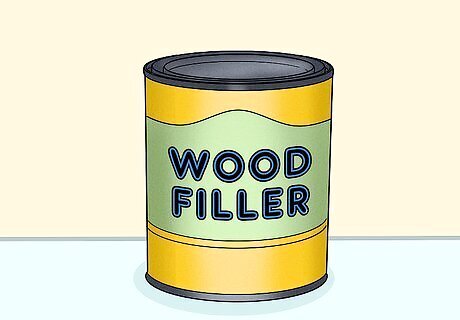
Countersink the nails and cover them with wood filler. Place a nail set in the center of the nail head and tap it gently until the nail sinks about ⁄8 in (0.32 cm) below the surface of the wood. Wipe away any sawdust, then use a putty knife to work putty or filler into the hole. Scrape off the excess with the side of the putty knife to create a smooth surface and allow the filler to harden completely. Then, sand the area gently with 180-200 grit sandpaper until the surface is smooth. It's easiest to choose a putty or filler that matches the color of the wood you're filling. However, you can also use a plain filler and stain it after it dries. This is a versatile option that works for all kinds of projects, including flooring, stairs, furniture, baseboards, and trim.
How do you hide finish nails in trim?
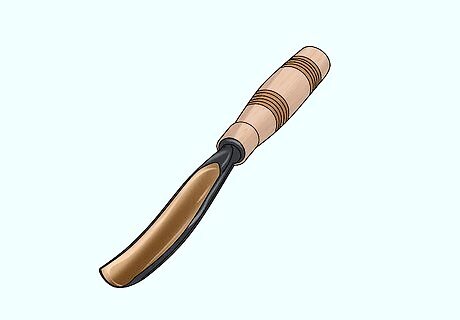
Gouge out a piece of wood, then glue the wood back over the nail. For a seamless way to hide finishing nails, use a wood gouge to scoop out a small chip of wood right where you plan to drive the nail. Try to leave the chip attached to the wood on one side, if you can, then drive the nail into the divot created when you removed the chip. Then, glue the wood chip back into place so it covers the nail. Once the glue dries, lightly sand the area so you'll have a smooth finish. This can be a little tricky, so it's a good idea to practice on scrap wood first. You can also hide the nail holes within the knots of the wood.
How do I cover my nails before painting?
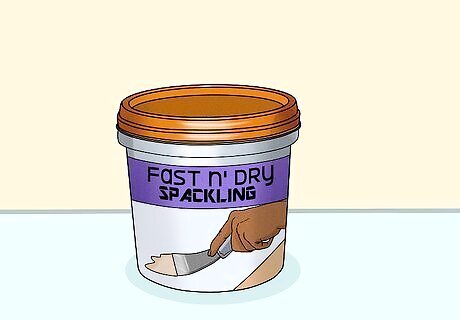
Spread a little spackle over the nail head. Countersink your nails by using a nail set and a hammer to drive them just a little below the surface of whatever you're going to paint. Then, spread spackle over the nail head to hide it. If you'd like, use a putty knife to smooth out the surface of the spackle. Once the spackle is dry, sand it lightly with 180-grit sandpaper, then paint the area.
Can I paint over nails?
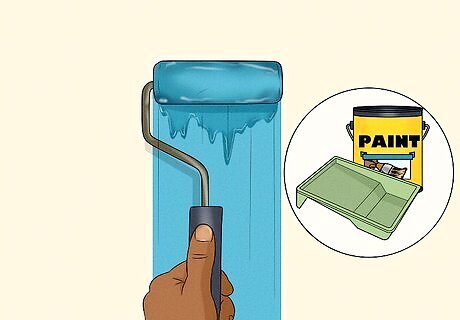
Use a thick roller to paint over nails you don't want to remove. Don't worry about pulling out the nails you use to hang your pictures or art before you start painting. Instead, just use a roller with a very thick nap—anywhere from ⁄4–1 ⁄4 in (1.9–3.2 cm). The roller will glide smoothly over the nail without leaving any gaps in the paint. This saves time so you don't have to try to find the nail holes again after they've been painted over.
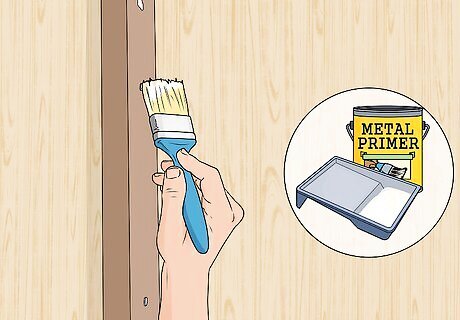
Prime and paint exposed nails in siding. If you paint right over the nails that were used to attach your siding, they'll likely start to rust over time—and that rust will eventually begin to show through the paint. To prevent that, coat the nail heads with a layer of metal primer, which will seal out moisture and prevent rust. Once the primer is dry, paint the siding how you normally would.
How do I hide nails in shiplap?
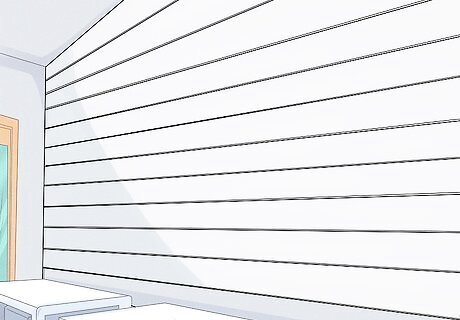
Drive the nails at an angle so the boards will hide the nails. When you install shiplap, each tongue-and-groove board is placed so it overlaps the previous one. By angling the nails downward, rather than driving them straight in, you can place the nails high enough so they'll be hidden by the previous ones. The nails on the very top board may still be exposed since there won't be another board overlapping them. You can hide those by countersinking them and covering them with wood filler.
How do you cover exposed nails on a roof?

Seal the exposed nails with roofing cement. When your roof is installed, the roofers should cover the last row of nails with shingles. However, this doesn't always happen. If you see exposed nails on your roof, coat all around each nail with a thick layer of roofing cement or roofing caulk. Do not use roofing tar, however, as this isn't sufficient to seal out water. It's important to seal the nails because the hole around each nail will allow water to seep into the roof, which can cause damage over time.
How can I cover my nails in the attic?
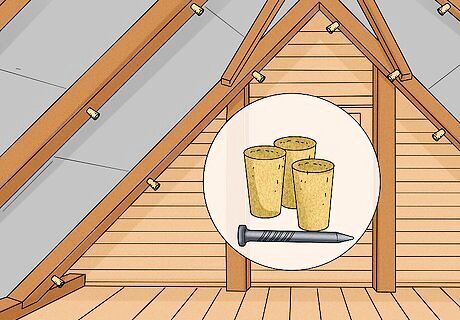
Push corks over the ends of the nails for a quick fix. If you just want to be able to put a box in your attic without bumping your head on a sharp roofing nail, corks make a super-easy solution. Just get a bag of standard corks from a hobby store, then push them firmly onto the nail. It's as simple as that! As a bonus, cork naturally repels termites.
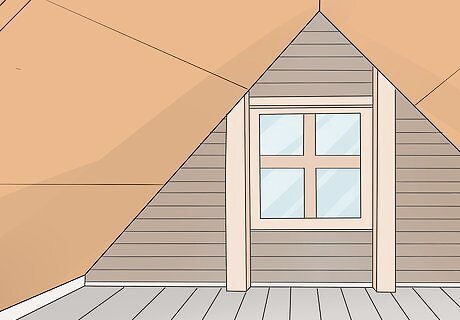
Create a ceiling out of paneling for a longer-term solution. If you'd prefer a more aesthetic solution, attach paneling or wallboard to the rafters in your attic. Cut the pieces of paneling to fit the width of your rafters, then nail them in place with finishing nails. This will create a lightweight ceiling that will hide the ends of the nails. Do not try to nail or screw the boards to the underside of your roof. This will create holes that will allow moisture and air to get into your ridge vents.
How can I fix my nail pops?
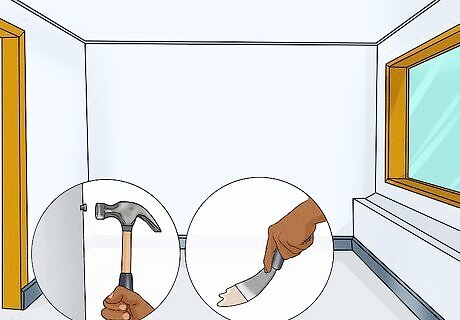
Hammer in the loose nail, then add additional screws. Over time, the natural expanding and contracting of your home can cause some nails to work their way free. To fix this, hammer the nail back into the stud, then secure the drywall panel by adding 2 drywall screws about 1 in (2.5 cm) above and below the nail. If you simply hammer the nail back into place, it's eventually going to work itself loose again. Make sure the screws will go at least ⁄4 in (1.9 cm) into the stud. If you have ⁄8 in (0.95 cm) drywall, for instance, your screws will need to be at least 1 ⁄8 in (2.9 cm) long. When you're finished, use drywall joint compound to smooth out any indentations left by the nails and screws.
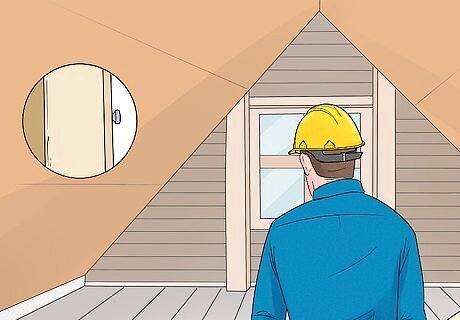
Hire a contractor if you have nail pops in the ceiling. If the nails are popping out of your ceiling, it typically is a sign that the drywall panels were attached directly to the trusses in your ceiling, rather than to clips or blocks. If that's the case, you'll need a contractor to replace the drywall panels. In some cases, this could even be a sign that there's a problem with your foundation, especially if you also have problems like: Doors that stick or don't shut Cracks around your windows, doors, or the corners of your ceiling Obvious cracks in your foundation
How do you hide nails on a deck?
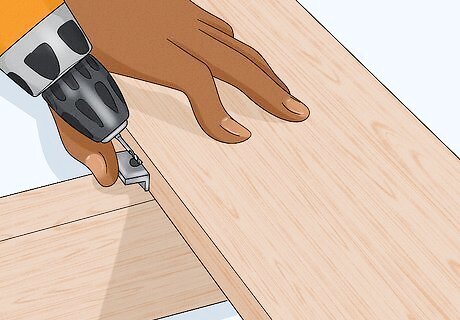
Use hidden fasteners for a nail-free look in your decking. Decks are traditionally built with a combination of galvanized nails and screws. However, if you want a modern, nail-free look, you can purchase specialized fasteners to hold the boards together. The two no-show types of fasteners are edge-mounts and undermounts. Edge-mount fasteners fit into a slot on the end of the board and are anchored to the side of the board with a screw. You may be able to see them between the boards when you look straight down. Undermount use steel strips that are mounted to the top of the deck joists. They typically can not be seen at all.
What is the difference between wood putty and wood filler?
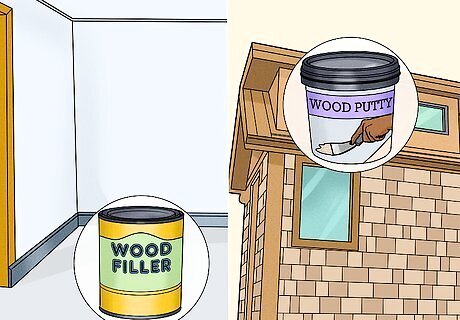
Use wood putty for outdoor or smaller projects. Wood putty is an oil-based product that you apply to wood after you stain or varnish it. It comes in a variety of colors, and it will expand and contract along with your wood. It feels like a soft clay or resin, and you'll need a putty knife to apply it. Because wood putty is durable and isn't as likely as wood filler to shrink over time, it's great for outdoor furniture. Wood putty dries hard, but it takes a lot longer to dry than wood filler.
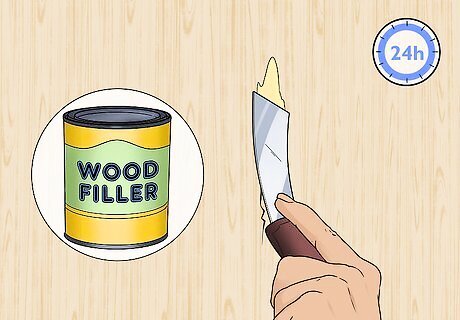
Opt for wood filler to fill larger cracks. Wood filler is a putty-like material that you can apply before you stain or finish the wood. The texture makes it a good option if you need to fill a large hole or crack in wood. It dries completely within 24 hours, but it's not adhesive, so you'll have to apply seal over the filler. Wood filler will shrink if it's exposed to sunlight, and it will eventually break as the wood expands and contracts, so don't use it for outdoor projects.



















Comments
0 comment